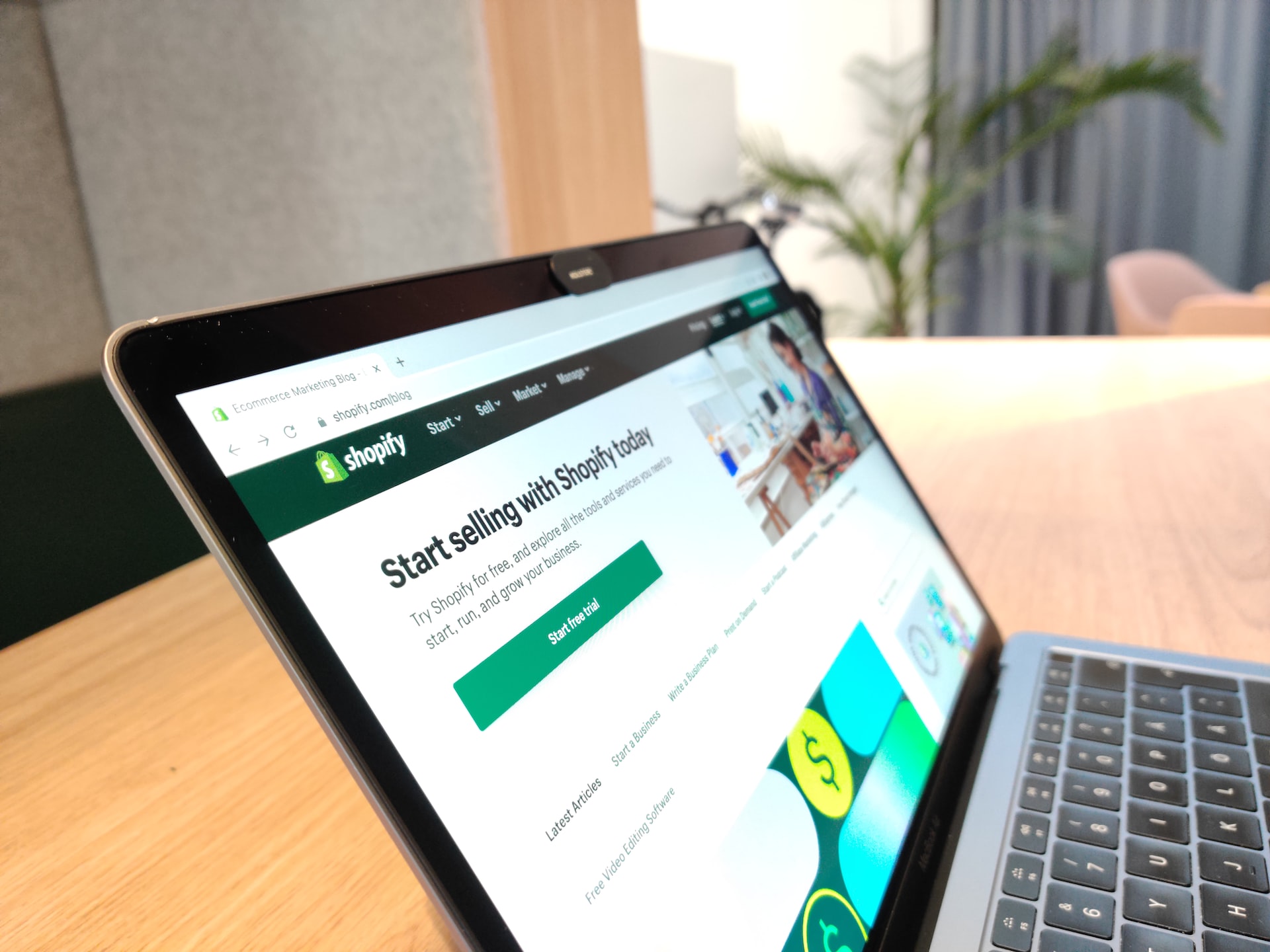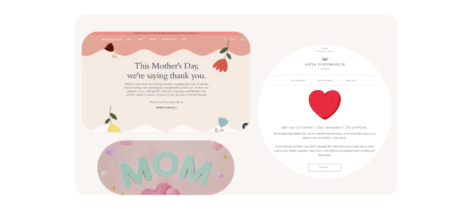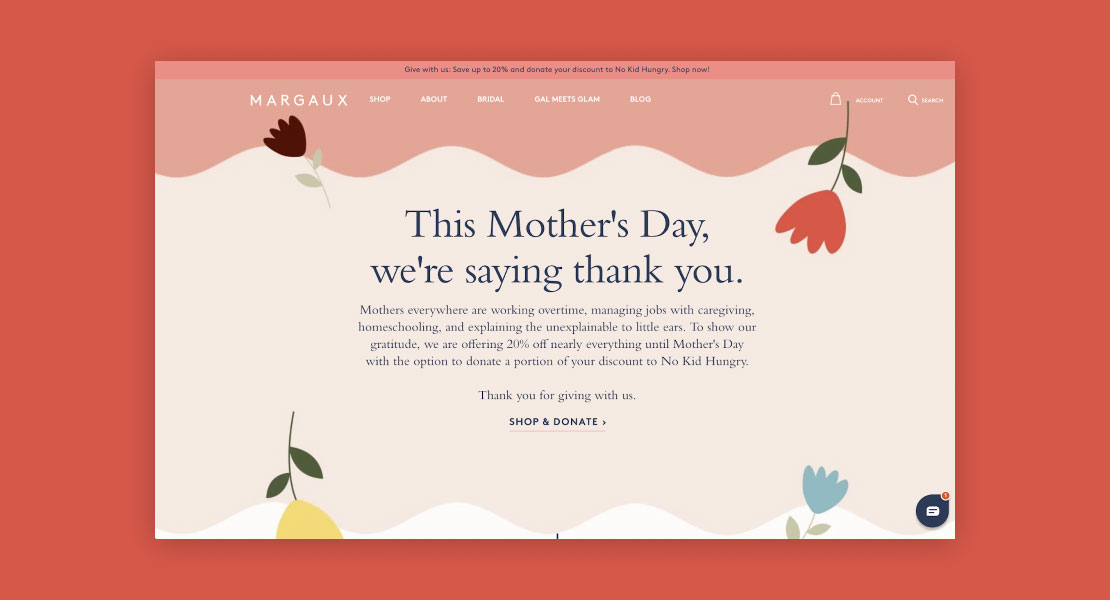As we kick off 2023, you are probably mapping out the upcoming year’s milestones for your eCommerce store. Your main goal in the next year should be to increase your Shopify conversion rates by utilizing the Shopify platform and ecosystem to their fullest potential.
Defining the meaning of conversion rate might be simple. But, successfully converting your traffic is, bar none, one of the most difficult challenges eCommerce stores face. So, even if your SEO efforts bring in organic traffic, your website will require conversion optimization to make the most out of these hard-earned visitors.
That requires designing your Shopify store with your customer’s needs and wants in mind for a smoother journey from start to finish. Below, we share six tips on how to increase your conversion rate on Shopify:
What Is Conversion Rate Optimization?
Picture this; your SEO efforts lead a prospect to your site. They click through your eCommerce store, scrolling a product collection page, select the item they want to purchase, and head toward the checkout. This is a textbook successful conversion journey. However, for this to happen repeatedly, you will need a fully optimized eCommerce site.
CRO, or conversion rate optimization, is the practice of increasing the percentage of your current website traffic that performs a desired action. In simple terms? It means providing visitors with an unparalleled user experience.
The average conversion rate for Shopify-based eCommerce stores is around 1.4%, but you should aim to top this and convert many more potential customers. If you push for more than a 3.3% conversion rate, your eCommerce can be considered one of the most successful on Shopify.
A CRO-optimized site will allow you to capture more of your prospects’ email address data, provide personalized on/off-site marketing, reduce cart abandonment, and ultimately increase sales.
However, before you can boost your eCommerce conversion rate, you need to have a deeper understanding of how it works.
Defining Conversion Rates for Shopify Stores
As we mentioned above, a successful conversion is when a potential customer takes the desired action on your site. But, conversion does not always mean filling customers’ shopping carts. Sometimes, your main goal can be to build your newsletter subscriber list or incentivize prospects to go over your carefully organized sales page, leading them toward the desired action.
To begin analyzing conversion rate, you will first have to set KPIs or (Key Performance Indicators) for your store. Those can be:
- Online sales
- Items added to the cart
- CTA clicked
- New subscribers to your newsletter
If you wonder whether it’s smooth sailing after achieving a solid conversion rate, the short answer is no. Conversion rates can fluctuate as can consumer preferences, you have to be on the lookout for the latest trends. However, if you know how to tap into customer behavior and have a deep understanding of your customers, it shouldn’t be difficult to continually optimize your Shopify store for the desired results. push them through the conversion funnel, it won’t be too difficult to replicate your success repeatedly.
How Shopify Can Help You Maintain A Steady Conversion Rate
While conversion as a metric can fluctuate, there are some steps you can take to ensure that it consistently meets and even exceeds your set goals. To be fair, Shopify makes this process easy for eCommerce stores with it’s many themes and checkout options.
Shopify’s ability to integrate easily with various apps that enhance your eCommerce store is one of its strongest suits. So whether you are interested in providing a better customer experience or boosting your current Shopify conversion rates, you should build a tech stack that seamlessly integrates with your Shopify store while providing additional value to your customers. From loyalty programs to product reviews and customers to onsite messaging and personalization, the Shopify ecosystem has everything you need to transform your eCommerce store into a conversion machine.
How To Calculate Your Shopify Conversion Rate
Before we tackle how you can optimize your entire eCommerce site, let’s first discuss how you can discover your current conversion rate.
You don’t need robust analytics tools to check your current conversion rate. All you have to do is navigate to Shopify’s overview dashboard. Here you can discover not just your conversion rate, but other pertinent data for your store’s performance. You can expect to find detailed reports on sales, average order value, total visits, and much more.
In addition, you can link your Shopify store with Google Analytics to track conversions across multiple channels. With Google Analytics, you can opt for Standard eCommerce tracking or Enhanced eCommerce tracking. The Standard eCommerce tracking will track clicks, views, and overall engagement. While the Enhanced eCommerce tracking will track product impressions, clicks, customers browsing shipment and payment options, the percentage of prospects that proceeded to the checkout, and so on.
If you want to do it the old-fashioned way, you can take the number of visitors you had and divide them by the orders you received for that particular time frame. The number you get is your Shopify conversion rate. Or, to put this into perspective:
50/3000 = 0.016 x 100% or a 1.6% conversion rate.
How To Achieve Solid CRO
Talking about CRO is easy; the hard part is taking action that will transform your customer’s entire experience with your eCommerce store. But worry not; Shopify can set you up for enormous success with its many supported apps.
While it’s a fact that apps found on the Shopify app store can improve your overall Shopify conversion rate, you will need a lot more support to reach the sweet spot of above a 1.4% conversion rate. Websites like the HubSpot Marketing Blog will provide relevant market data, help you pinpoint the latest trends and popular opinions, and shape your strategy to cater to your prospect’s contemporary wants and needs. You can also review statistics to discover how others in your industry are performing, what strategies are working for them, etc.
6 Ways to Improve and Boost Your Shopify Conversion Rate
Now that we got the technicalities out of the way let’s answer the million-dollar question of how to increase Shopify’s conversion rate. A significant signal that your eCommerce store needs a thorough rework is when your SEO efforts drive traffic, but your overall revenue and conversion rate remain the same. This is a signal of a problem that you should not wait to look into.
Below you will find tips on improving each step of your customer’s purchasing journey and, in turn, increasing your conversion rate.
- Simplify your store’s UX
To reduce bounce rate and increase the likelihood of a conversions your best course of action is to ensure your website is well-designed and optimized for desktop and mobile use.
A sluggish site will make your eCommerce store unappealing and likely prompt visitors to take their business elsewhere. Unfortunately, when it comes to conversion, you only have a couple of seconds to charm prospects before they are gone, never to return. Avoid using images and unnecessary promotions too soon in their journey as it will overwhelm your customers and tank your website load time.
In addition, your clients should be able to find what they are looking for in seconds. Filters and search bars are your biggest help here.
- Build a sales funnel
Knowing your customers’ wants and needs will take you far in this industry. Forcing prospects toward a certain product or trying to drive them towards what you want them to do will only frustrate them and make them leave.
Successfully incentivizing prospects to proceed toward the checkout page will stem from your understanding of each step of the customer journey and the why behind their needs.
Start from your own perspective: What do you expect from an eCommerce store besides top-quality products? Is it nice to receive supplemental information that adds value to your experience and purchased product? Would you like to consult an expert before locking in the purchase? Or would you like to go over honest reviews to ensure you are getting your money’s worth?
It’s a fact that some product categories will receive greater attention and practically sell themselves. While you can create promotions that will help boost sales of the less popular ones, you should always let the prospects’ be the driving force of your eCommerce site experience.
Extra Tip: Prospects look for social proof. Positive reviews and testimonials will help you build long-lasting customer relationships. Include testimonials and client reviews on your home and landing pages to built trust faster, include these on exit offers to make them feel more comfortable with the products in their cart, etc.
- Charm with well-designed popups
For quite some time now, popups have been the leading conversion rate optimizers that allow eCommerce stores to express their creativity and wow site visitors.
Popups can serve you to welcome first-time visitors and make product recommendations based on your current top sellers. Since you probably use SEO to drive more traffic to your eCommerce site, you must be mindful of how you deploy your popup messages. Google will not punish non-intrusive popup messages, so you can freely use popups that enhance the user’s experience with your business as a whole.
Some of the best popup practices include:
- The use of banner popups: Banners are incredibly effective, and they occupy only a tiny part of the user’s screen. And, since most web searches are done via mobile, they are also perfect for individuals who prefer to shop via their handheld devices.
- The use of exit intent pop-ups: With the help of well-timed exit offer pop-up messages, you can pique prospects’ interest just about as they are to leave your store. In most cases, a conversion will only be possible if you maintain the attention of first-time visitors.
Popups can also provide entertainment for your eCommerce store shoppers. Gamified popups are as trendy as they get, and no one can be indifferent to a round of spin the wheel for a prize. Between fun designs and interactive elements to brand personality—gamified promotions are one of the best ways to increase conversion rates since they boast a 13% opt-in rate!
And lastly, timed popups can help you capitalize on the desire your on-site content and products produce. For instance, if a prospect spends some time reading the description and features of a particular product, deploying a special offer popup will most definitely seal the deal.
Extra tip: As soon as popups are mentioned, the words paint a picture of a captivating promotion appearing at the center of your screen. However, as effective as they are, center pop-ups are actually not always the most effective! Corner popups have a staggering conversion rate of 35.29% for our users. Always test and find what works best for your target audience.
- Retarget with a winning newsletter
Having a prospect’s email address drastically increases your chances of a successful conversion. Statistics show that not all of your website visitors will make a purchase the first time around. So, it’s vital to keep them in your conversion funnel as long as you can and try to pique their interest with a special offer to try and drive them back to your website later on.
With their email, retargeting is possible, and popups are the perfect email list builders; with their help, no lead can remain just a lead for a long time. Sending personalized, relevant emails to your new subscribers will quickly turn them from leads into customers. Keep up the momentum after initial welcome flows with a winning newsletter, seasonal campaign, or other targeted emails.
The combo of Justuno and Klaviyo is a no-brainer for Shopify stores to improve their conversion rates, uniting the onsite and off-site experiences through seamless integration, passing zero/first-party data, mirrored experiences, and powerful automation.
Extra Tip: To make your newsletter more appealing, include behind-the-scenes access to your team and customer community or exclusive access to new products and seasonal styles! FOMO is one of the most powerful motivators a brand can use.
- Value content
Some of your prospects will require more info before making a purchasing decision. For this reason, it’s imperative that you need to provide as much value via your written content as your can. Blogs are a great way to do it, as you can go in-depth about your products, how to choose the right one for different audiences, and answer more granular questions about how to use or care for them. Not only will they provide value to the traffic you already have, but blogs like these also have an SEO impact as well opening up new avenues for brand discovery.
You can elevate the overall experience for returning buyers by producing special content that is exclusive to loyal customers. This is a great way to boost retention and ensure that a single individual makes multiple purchases. Send out this kind of content via your newsletter, segmenting the most loyal of customers via lifetime spend, loyalty points earned, etc.
- A/B testing
When optimizing your eCommerce for success, you can only truly know what works or does not with the help of data. And since the Shopify conversion rates of your store translates to profit, proceeding without a clear strategy can be very costly.
A/B, or split testing, can be defined as a statistical way to compare two versions to determine which one performs better. Sometimes, eCommerce stores might think they know what their customers are looking for and prefer, but often that perception couldn’t be further from the truth.
A/B testing can help you with this as you will gather data on which version of a newsletter or web design your clients find most appealing. Or you might have started experimenting with colorful CTAs. We all know that colors subconsciously impact us, and certain ones can even produce a sense of urgency, such as the color red. But you can never know if that’s the case if you do not complete an A/B test.
Making data-driven decisions is only possible with the right tools. Luckily, Justuno has everything you need to create and split-test your promotions.
The Bottom Line
Increasing your Shopify conversion rate through CRO will take work. But with the right tool, you can effortlessly test onsite messaging and personalization strategies with ease—creating the most effective and highest converting onsite experience possible.
Try Justuno free for 14 days to see just how much money you’re leaving on the table without having a strong CRO platform on your Shopify store.



